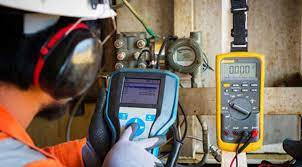Flowmeter calibration is the procedure of adjusting a flow meter’s metering to standard metering and then comparing that to the appropriate standard.
Most flow meter manufacturers typically only calibrate their devices in-house once the production or shipments have finished. If a manufacturer wants to continue selling their meters after they have gone through the calibration procedure, they can do so by recalibrating them.
There are also some types of flow meters that can go through a self-calibrating process when first purchased, although these types of flow meters do not come with an option to recalibrate them.
There are several best practices for flow meter calibration. One of the best practices for flow meter calibration involves running the calibration procedure from a computer for those using a USB flow meter.
There are many types of computer programs available today that allow a user to run the calibration procedure.
- The best practice for calibration of these meters is to make sure they are calibrated before being installed in a manufacturing factory. Once installed, they will need calibration from time to time, especially as they get older and begin to show wear. You want to do so before installing your new meters to turn off the power to the device, so it does not get any electric power.
- You also want to turn off the power at the circuit breaker box so that no one accidentally turns the power back on during the installation process. In addition, you want to turn off the mains during the installation process, so the meter does not get damaged during the process.
- Many new flow meters will come with a built-in calibration device. This is especially true of the newer models, which typically have a small light bulb used to indicate when the flow rate is calibrated. To make this easy for the user, many flowmeter manufacturers have created what is called the FPR-1. This is a very tiny LED that flashes when the flow rate has been calibrated. This is a good indication that the flowmeter has been calibrated, and the flow rate is what it should be.
You may also want to use an external flow meter. These types of flow meters can be easily removed so you can recalibrate the device.
There are many different types of external flow meters on the market today, and you can shop online to find the one that works best for you. Once you have the external unit, it is good to turn off the power to the device so that there is no possibility of damage occurring.
Conclusion: When you are doing what flow meter calibration is, you need to know how many degrees per minute your flow meter has been measuring. This is because different flowmeters use an additional reading from the same degree per minute. It is a good idea to count out loud your flow reading at various other times when you are testing the flow meter. The loudness of the sound will help you determine whether or not you are getting an accurate reading or something wrong with the device.To buy this just visit us at pcdflowmeter.



Recent Comments